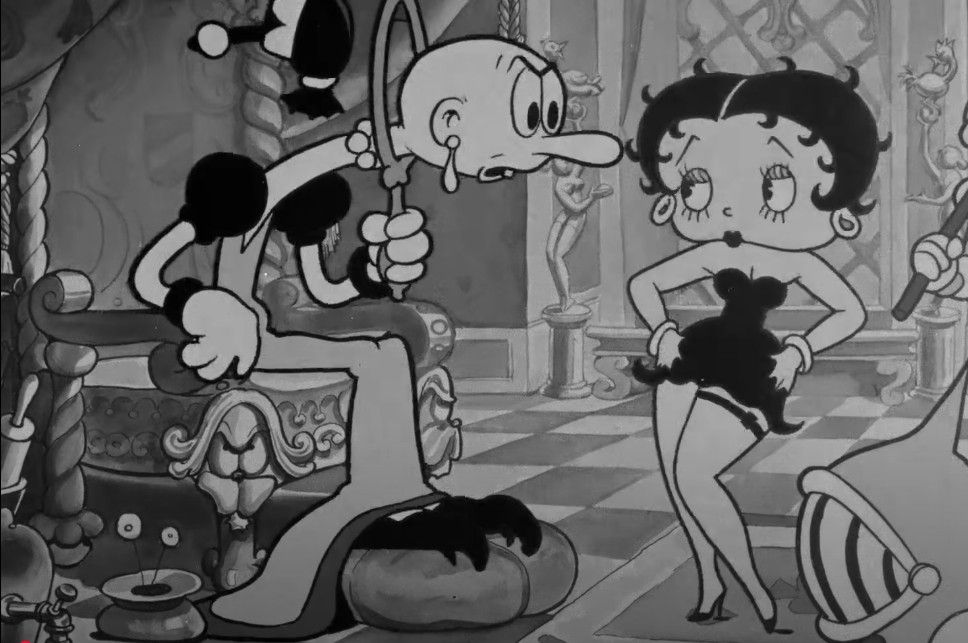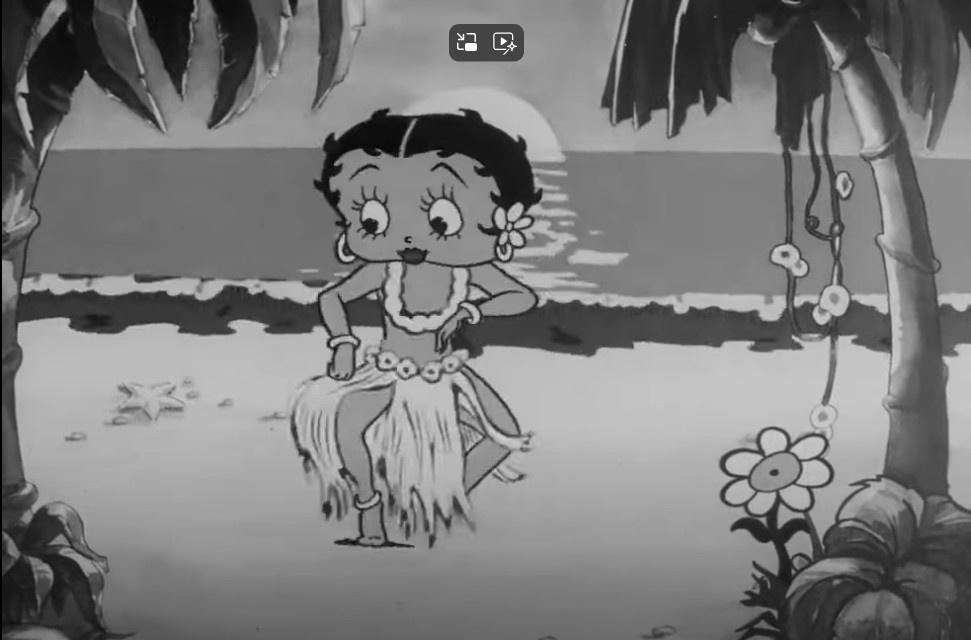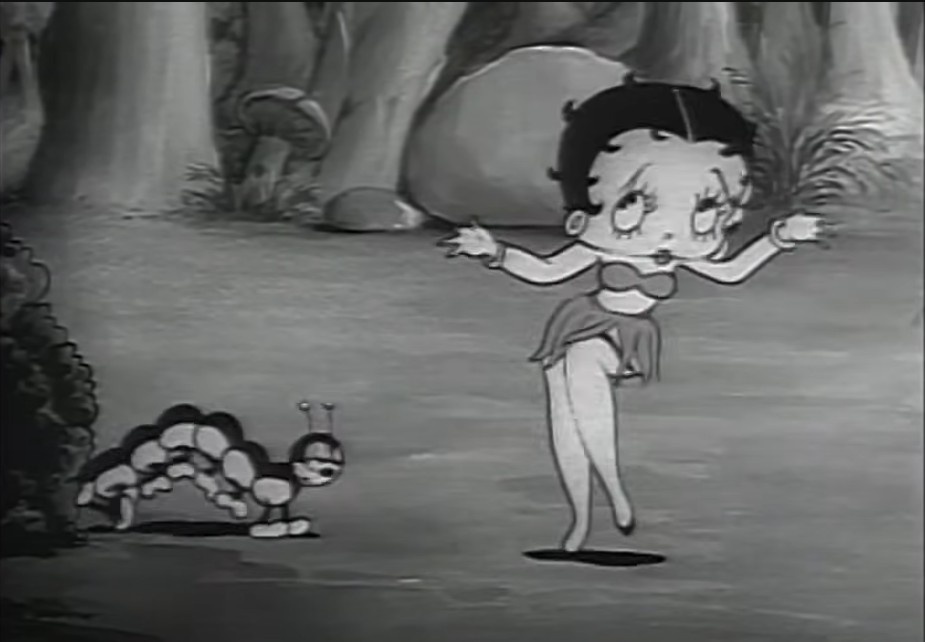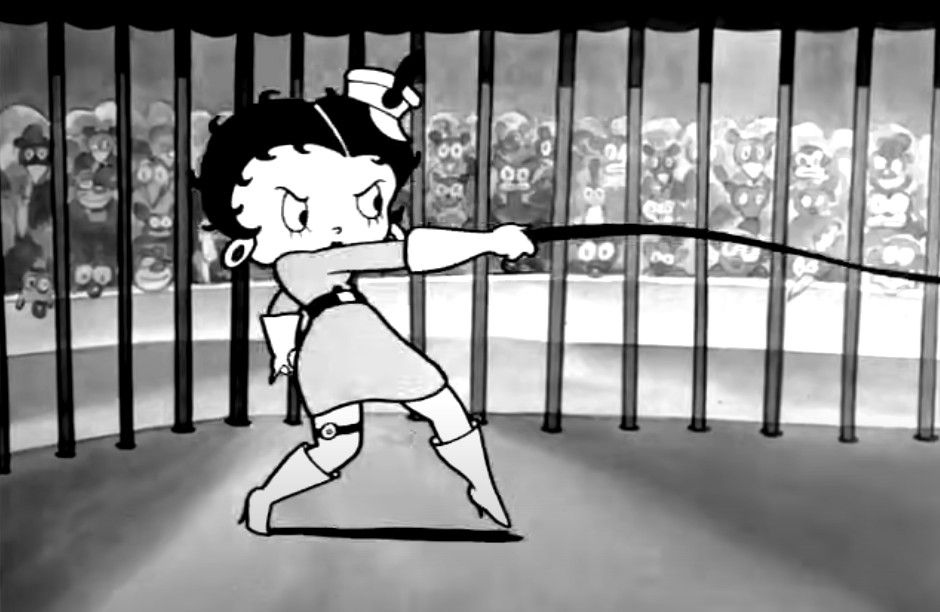◖Betty Boop: From Sex Symbol to Feminist Icon◗
Few animated characters have transcended their time to achieve cultural immortality like Betty Boop. Created by Max Fleischer in 1930, Betty Boop quickly became a defining figure in early animation, exuding a playful charm and uninhibited sensuality that challenged the conservative norms of her era (Fig.1). Her signature high-pitched voice, flapper-style dress, and flirtatious demeanor made her an instant hit, while also sparking debates about the representation of female sexuality in the media. Over time, Betty Boop has evolved from a mere sex symbol into a feminist icon, representing the fight for female autonomy, independence, and empowerment.
The Birth of a Sex Symbol

Originally introduced as a caricature of a Jazz Age flapper, Betty Boop was the first female animated character to embrace overt femininity and sexuality. Her exaggerated features—large, expressive eyes, short curls, and a petite yet curvaceous figure—were designed to captivate audiences. She was inspired in part by jazz singer Helen Kane, whose distinctive baby-voiced singing and coquettish style heavily influenced Betty’s character. In a series of cartoons, Betty Boop flaunted her independence, dancing provocatively and challenging the constraints placed upon women in the early 20th century. This portrayal was groundbreaking, as she was among the first animated characters to embody a mature woman's form, distinct from her contemporaries who often lacked such definition. Episodes like "Betty Boop's Bamboo Isle" (1932) exemplify this, where Betty performs a hula dance wearing only a strategically placed lei and grass skirt, highlighting her allure (Fig.2). Such depictions solidified her status as an animated sex symbol.

At a time when censorship laws had yet to take full effect, Betty Boop's early cartoons depicted a level of risqué humor and sexual innuendo that was uncommon in animation. She was unafraid to embrace her sensuality, making her both a target for moralists and an icon for women who saw her as a representation of liberated femininity. However, this freedom was short-lived; by 1934, the enforcement of the Hays Code—a set of industry-imposed moral guidelines—forced the animation studio to tone down her character, covering her revealing dresses and removing suggestive content from her storylines.
Betty Boop as a Feminist Icon

Despite these restrictions, Betty Boop’s influence persisted, and her character took on a new form of cultural significance in later decades (Fig.3). While initially perceived as a mere sex symbol, she gradually emerged as a feminist figure who represented resilience in the face of systemic oppression. In an industry dominated by male characters and patriarchal storytelling, Betty Boop’s autonomy and confidence were groundbreaking. Betty was one of the first animated women who was not defined by a male counterpart. Unlike many female characters of her time, she was not merely a sidekick or love interest but a central figure with her own agency. She was depicted as an independent working woman, often seen pursuing careers and standing up for herself in male-dominated spaces. Her strength and assertiveness paved the way for future female cartoon characters who would embody feminist ideals more explicitly.

Beyond her sensual portrayal, Betty Boop emerged as a figure of resilience and independence, confronting issues like sexual harassment—a bold narrative for her time. In the episode "Boop-Oop-a-Doop" (1932), Betty, a high-wire performer, faces the unwelcome advances of a lecherous ringmaster who threatens her employment if she doesn't submit. Despite the coercion, Betty stands firm, singing, "Don't Take My Boop-Oop-A-Doop Away," asserting her agency and resisting exploitation (Fig.4). This storyline not only showcased her strength but also highlighted the challenges women faced, positioning Betty as an early feminist symbol in animation. Moreover, her status as a trailblazer for female representation in animation has been re-evaluated in contemporary feminist discourse. Modern interpretations celebrate her as a symbol of female empowerment, highlighting how she defied the restrictive gender norms of the 1930s. Today, Betty Boop is frequently embraced by feminist and body-positivity movements, serving as an emblem of self-expression and confidence.
Betty Boop’s legacy is a testament to the evolving perceptions of female characters in media. What began as an embodiment of Jazz Age sexuality has grown into a powerful symbol of women’s resilience and autonomy. As discussions of gender representation in entertainment continue, Betty Boop remains an enduring figure who reflects both the struggles and triumphs of women’s liberation.
Text by Museum of Eroticism
Image Courtesy: YouTube.
References:
1. Barrier, Michael. Hollywood Cartoons: American Animation in Its Golden Age. Oxford University Press, 1999.
2. Crafton, Donald. Before Mickey: The Animated Film, 1898-1928. University of Chicago Press, 1982.
3. Kanfer, Stefan. Serious Business: The Art and Commerce of Animation in America from Betty Boop to Toy Story. Scribner, 1997.
4. Stabile, Carol A. White Victims, Black Villains: Gender, Race, and Crime News in US Culture. Routledge, 2006.